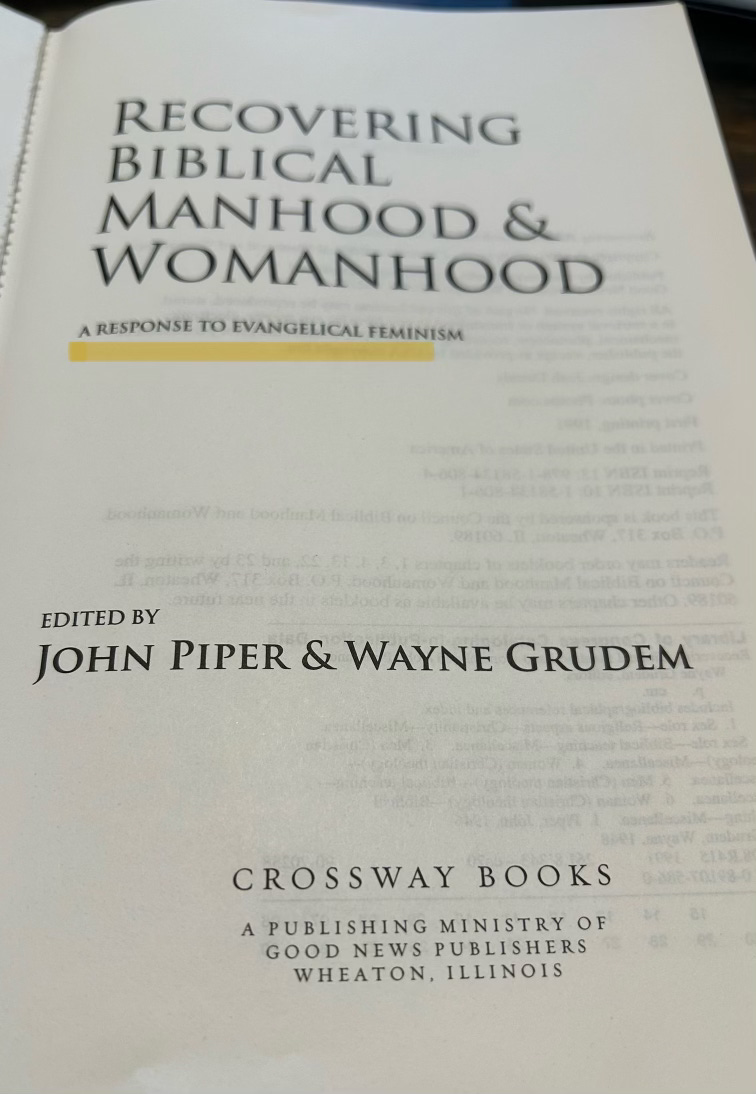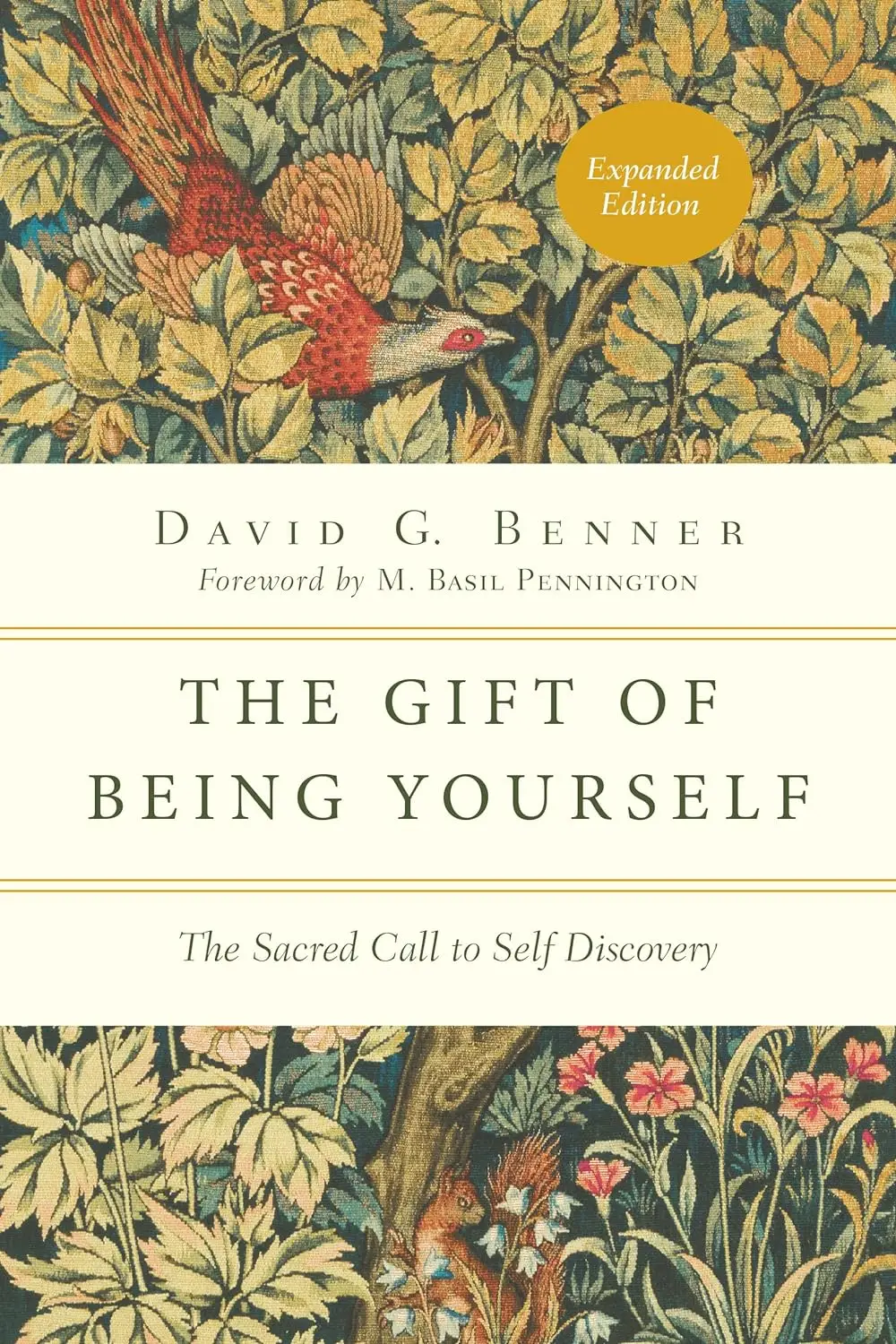a warning for woman-to-woman caregivers
I feel like I’m unwriting a book. When I started writing Help[H]er, I had no idea where it would end up. HH was just a simple book about a woman-to-woman caregiving ministry. The purpose was to get the information about the ministry into the hands of pastors and churches who needed it. I had no grandiose plans for retiring on income from the royalties.
While I’m relieved the outcome is that the book is no longer in print, I’m saddened by what remains. Many churches bought into the model, but there are significant failures rooted in this particular type of woman-to-woman ministry. Women trusted the structure I articulated in the book. Yet they continue to inform Help[H]er of the harm caused due to this so-called “care.” What’s the problem? I suggest it has to do with what we believe about the doctrine of woman.
The first four posts in this series (here , here, here, and here) identified one aspect of this current doctrine which, as part of the fabric of the church, has potential to create more church hurt for a woman in crisis than good. “Role theory” is the concept that suggests there are specific roles assigned to people based on gender, and that those roles for behavior are understood and adhered to by all. There are multiple aspects to these roles, so the first one I discussed was that a woman is to be perched happily in a nest in her home.
I then wrote about this idea that a woman’s role is to remain silent in the church. After a brief foray into…
…I introduced the notion that men in complementarian spaces believe they have a specific/special type of authority,[1] one a woman does not have. Today, I’ll break authority down a little more and discuss what those with this special authority think they are supposed to do.
Bait and Switch
Historically, women have always been considered the inferior gender.[2]
In fact, even though the man was created outside Paradise (i.e., in an inferior place), he is found to be superior, while woman, though created in a better place (i.e., inside Paradise) is found inferior. Ambrose, On Paradise.
The natural order for mankind is that women should serve men and children their parents, for it is just that the lesser serve the greater. The image of God is in man and it is one. Women were drawn from man, who has God’s jurisdiction as if he were God’s vicar, because he has the image of the one God. Therefore, woman is not made in God’s image. Corpus Iuris Canonici.
Paul thus has proved that by divine and human right Adam is the master of the woman. That is, it was not Adam who went astray. Therefore, there was greater wisdom in Adam than in the woman. Where this occurs, there is greater authority…He persevered in his dominion over the serpent, which did not attack him but rather attacked the weaker vessel…just as he does today. Martin Luther.
In fact, the only era when women began to emerge out from under this identity was during the Women’s Liberation movement. The church, typically far behind society, only dipped their toe into this freedom crusade before complementarianism[3] appeared and nipped it in the bud. What the feminist movement did for the church was cause it to rethink interpretation of their doctrine of a woman from the Scriptures. When they did, they acknowledged female significance; woman was in fact created in God’s image. The immediate problem with that line of thinking, however, was how to retain male authority. If woman was not inferior, how might male hierarchy be substantiated? The doctrine of complementarity was a direct response to the problem of feminism.[4]

Don’t get me wrong. I’m not against the idea of husbands and wives complementing one another. When we do, it’s a beautiful display of interdependence that resembles a couple dancing a waltz. As both genders give and receive generously, they outdo one another in showing kindness and love. If you watch a waltz, you’ll notice how much each partner flourishes. As well, I have the privilege of working side by side with many men who dignify women by treating us as fellow human beings, and I in turn admire their character and individuality. But is that what complementarianism teaches? Not really. In the currently understood doctrine, the emphasis is that men lead, and women submit. This is not a vision of complementarity. This is fundamentally a chain of command. In fact, complementarians who describe the role of a helper often use military language as an analogy for the lead/follow positions.
To be fair, complementarians teach that women are yes, equal in dignity. However (as they say), we are intrinsically different in our roles. They develop this theory from an interesting twist on the relationships in the Trinity. The orthodox understanding is that the Godhead is one in essence, but three distinct persons in relationship to one another. The modern deviation of that doctrine orders the trinitarian relationships. In other words, Christ orders under His father in eternal submission. By mapping that idea on to male/female relationships it then justifies female submission.[5]
My point, and I do have one
Ok, what does this all mean for a woman-to-woman caregiving ministry? Well, while the church no longer speaks of women as the inferior gender, we nonetheless persist in promoting this perception. As they say, you can jumble them together, but the concept still remains. Consider the current, popular level thinking,
Women, who are generally more contextual and sensitive to the feelings of others, may be on the whole more particularly tempted to doctrinal deception. If Eve’s deception speaks to the nature of women, then Paul forbids teaching or authority because women—who outshine men in other areas—are, on the whole, more likely to acquiesce to doctrinal deviation…Adam was supposed to be the head, responsible for loving leadership and direction. But he abdicated his role, and Eve took on the mantle of leadership instead. As a result of this role reversal, sin entered into the world. On this understanding, Paul is pointing to the difference between the two guilty persons: Adam sinned openly, but Eve was deceived. DeYoung, Men and Women, 85.
As a result of the fall, man no longer rules easily. He must fight for his headship. Sin has corrupted both the willing submission of the wife and the loving headship of the husband. The woman’s desire is to control her husband, to usurp his divinely appointed headship, and he must master her if he can. So the rule of love founded in paradise, is replaced by struggle, tyranny and domination. Foh, What’s a Woman’s Desire?, 382.
The responsibility of congregational oversight belongs to the ordained leadership of a covenant community as Christ exercises His authoritative care through them. Yet, the burden of oversight can be heavy, and many ordained leaders feel inadequate to address some issues involving women. For some, the nuanced emotional issues seem overwhelming. Fox, Ed., Estock, Alongside Care, 45
In summary, women lack essential[6] intelligence, the ability to discern doctrine accurately. Women are more sinful, susceptible (because of Eve), and bent toward usurping male authority. Women’s emotions are significantly more difficult to stabilize than a man’s.[7]
Less intelligent, more sinful, susceptible to temptation, emotionally unstable. Inferior.[8] Nothing new under the sun.
How does that practically impact care?
When the relationship between myself, my church, and the HH publisher began to go south, everyone agreed for the need to sever ties between the HH book and HH ministry. I thought the process for dissolving the connection would likely involve multiple discussions, and I fully anticipated I would be involved in those discussions. Instead, my church and the publisher presented me with a “Memorandum of Understanding” with two options. Change the name of the book or change the name of the ministry. I felt like I had been erased. Why didn’t the publisher include me in the conversation?
When I presented evidence that the HelpHer book and video resources publishing agreement was between me (an individual, actually one of two who “wrote” the book) and the publisher, I was told that their very philosophy of ministry prohibited such an arrangement.
A proposal from individuals (no matter how qualified) on a topic like this would have been contrary to the philosophy of ministry I presented to the CDM. I cannot agree that the Help[H]er project was essentially a private agreement between CDM and one or more individuals disconnected from CCC. For me to approve a project like that would be contrary to my philosophy of ministry, as well as what I reported to the CDM.”
Perhaps it was my own naivety to enter into such an agreement (although it was my name—not the church’s—on the dotted line). However, don’t miss what was said. The book I wrote and resources I (an individual) produced—no matter how qualified (I am)…on a topic like this (i.e. women’s care)—only achieves credibility to the degree that the materials are connected to a church. In a culture where female intelligence, sinfulness, and emotions are problematic, a doctorate means nothing.[9] As women, our expertise is validated only as mediated by the wisdom, righteousness, and leadership of men. If you’re a female caregiver, your advice in the crisis situation—no matter the level of your expertise—is simply that. Advice.
Remember, for “role theory” to continue, behaviors must be understood and adhered to by all. When it comes to our care, complementarian leadership filter circumstances through these concepts. That means women who nod in agreement with the preceding concepts and order their lives accordingly mistakably undermine our’s and our sister’s healing.
I haven’t decided yet if I should keep writing on the role of authority (it’s comprehensive!) or move on to another faulty concept within current thought for woman-to-woman caregiving. I’d love to get your feedback. What kinds of things are you hearing in your context? In your care?
[1] Additional catch words and phrases to pay attention to may also include, “created order,” “special instruments,” “ordained,” “rulers,” “leader,” “head,” “unique privilege,” “essential worker,” “overseer,” “divinely appointed,” “dominion,” “order,” “divine authority,” “authoritative role,” “his calling,” “ordained shepherds,” “their shepherding responsibility,” “authoritative leader,” “spiritual authority,” “decision maker,” “divinely ordained,” “accountable,” “ordained leader,” “headship.”
“A helper in this context would affirm this God-given leadership, assist primarily the leaders (assist the woman in crisis secondarily), rely on leaders for the care of women, serve the brothers in their oversight, offer advice only after given approval, resist undermining authority, demonstrate respect for the “office,” remain accountable, report to leaders, advocate for the leaders, represent them, act as the leader’s helper, offer correction to the woman in crisis, encourage trust from the woman for her leaders, limit confidentiality, protect leadership from getting overwhelmed by the situation, and challenge the woman’s sinfulness” God’s gift to mankind.
As with a similar list on my post (Let’s Start at the Very Beginning), some of these terms are biblical and can/will be used in a positive sense. For a better understanding in your context, you may want church leaders to define and clarify their position and how it might impact a caregiving ministry for the women in your church.
[2] Terran Williams, How God Sees Women, The End of Patriarchy, 28, attributed to William Witt, Icons of Christ, ch.3.
[3] We have an inordinate amount of trust in this doctrine, one that has not benefited from deep & prolonged reflection by a wide range of scholars & theologians from a variety of perspectives. Complementarianism was developed from the “plain means of Biblical texts.” This should be of utmost concern for any of us who attended seminary and learned hermeneutics. It took the church hundreds of years to develop the doctrine of the Trinity. An equal, if not extensive amount of time should be devoted to the doctrine of (wo)man, the “prophet who explains God and proclaims all His excellencies.” Bavinck, Dogmatiek.
[4] My question is always, why target the woman’s response to misogyny in order to “fix the problem” of feminism rather than address the misogyny and patriarchalism that precipitated it? This is a similar dynamic that happens in homes with domestic abuse, when the woman is the focus in counseling “care” for her sinful response rather than the focus directed to the abuse of the oppressor.
[5] Proponents of Complementarianism deny “Eternal Submission of the Son.” “The biggest thing I would change is steering clear of the Trinitarian analogy altogether as a defense of complementarianism. I do think there is an important point to be made from the God-Christ parallel in 1 Corinthians 11:3—namely, that headship does not imply ontological inferiority. But even here we should be careful to note, as Carlton Wynne recently brought to my attention, that there is an “economic” expression of the Son in view in verse 3 (“Christ”), not an immanent or ontological expression. On balance, I would no longer try to use the Trinity “as our model” for the marriage relationship, both because it is not necessary for complementarianism to be true and because the metaphysical inner workings (if that’s the right term) of the ineffable Trinity do not readily allow for easy lifestyle applications.” https://www.thegospelcoalition.org/blogs/kevin-deyoung/distinguishing-among-the-three-persons-of-the-trinity-within-the-reformed-tradition/. Yet, in practice, the concept remains baked into the doctrine. There have been NO changes to the Danver Statement. Also, “created order” is a common phrase now used to substantiate hierarchy. https://clearlyreformed.org/death-to-the-patriarchy
[6] How will women enjoy the blessing of salvation if their doctrinal wisdom is compromised? See God’s Gift to Mankind.
[7] Conversely, men’s anger is tolerable? Credit to Shelia Gregoire for this insight on the Safe to Hope podcast September 19, 2023.
[8] The academic article from which I derive these Substack posts is my own DMin dissertation. However, only 33 pages into Terran Williams, How God See’s Women, I am stunned to read he has had many similar thoughts.
[9] More on that in posts to come.





